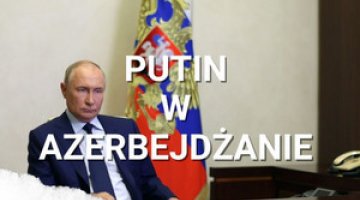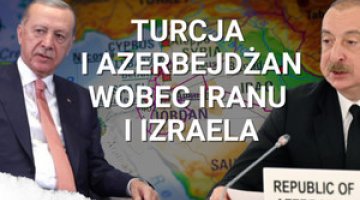Tension escalates in Nagorno-Karabakh
On 24 March, Azerbaijani forces entered the village of Farrukh (Armenian Parukh), located on the border of Nagorno-Karabakh and the former so-called occupied territories (which came under Baku’s control after the 2020 war), northwest of the town of Agdam. According to the Armenians, this was an act of aggression, although the Azerbaijani side referred to the action as “establishing positions and deployment locations”. Baku also denied using force: the separatist authorities in Stepanakert (Azerbaijani Khankendi) stated that over the next few days the Armenian positions came under fire, from weapons including drones. Three Armenian soldiers were to be killed in the attacks. A contingent of Russian peacekeepers stationed in the conflict area undertook to mediate after the clash (the escalation took place within their area of responsibility); there were also telephone conversations between Russia’s Defence Minister Sergei Shoigu and his counterparts in Azerbaijan and Armenia. Moreover the Prime Minister of Armenia, Nikol Pashinyan, spoke twice with Vladimir Putin. On 27 March, the Russian Defence Ministry announced that the situation had been brought under control and that the Azerbaijani forces had withdrawn. Azerbaijan’s Defence Ministry angrily denied this, and a video appeared online to prove that its troops were still present in Farrukh.
Commentary
- The entry into the village of Farruch is part of a broader strategy adopted by the Azerbaijani government since the end of the second Karabakh war (autumn 2020). This consists in maintaining the tension around the conflict area and along the border with Armenia, and creating facts on the ground. For example, in September 2021, Azerbaijan unilaterally set up border checkpoints on the road connecting the towns of Goris and Kapan in the south of Armenia (this route, which briefly runs through Azerbaijan’s territory, is the main artery linking the south of the country with Yerevan, as well as Iran with Armenia & Georgia). In addition, on 8 March, the Azerigaz company suspended gas supplies to Armenian-controlled areas of Nagorno-Karabakh, explaining this in terms of a technical failure requiring renovation work (winter temperatures in this area of the Caucasus are below freezing; gas deliveries are scheduled to resume on 29 March). The constant pressure brought to bear on Armenian side in this way – and indirectly on Russia, which guarantees the ceasefire – is intended to persuade Yerevan to conclude a peace agreement with Azerbaijan (and preferably also with Turkey) as soon as possible and to unblock communication routes in the region. Azerbaijan’s strategy also aims to ensure the continued presence of the Karabakh issue on the international stage.
- It seems that Baku’s current aggravation of the situation is a kind of test aimed at checking what reactions will come from Moscow, as it deals with the war in Ukraine, and then from the international community, including the US and France, which co-chair the OSCE Minsk Group together with Russia. So far, the reaction from Russia – consisting of talks in the area and between Moscow, Yerevan & Baku triangle, and calls for a retreat to the starting positions – is seen by Azerbaijan as being relatively subdued, as evidenced by the confrontational tone of statements issued by its defence ministry. Baku has firmly rejected Russian allegations that it has violated the arrangements set out in the declaration by Presidents Putin and Ilham Aliyev and Prime Minister Pashinyan (9-10 November 2020) which marked the end of the war. According to this narrative, these agreements have been violated by both Yerevan and Moscow itself (Baku has a very broad interpretation of the provision to remove Armenian armed formations from the area of responsibility of the peacekeeping forces deployed in the Nagorno Karabakh region). If Russia does not soon take decisive steps to discipline Azerbaijan, its position as a mediator – and thus its position and influence in the South Caucasus – will be weakened significantly. In such a situation, we should expect Azerbaijan to further keep putting Russia to the test in an aggressive way. It is almost certain that this strategy is supported by Turkey, for which the South Caucasus is one of the areas where it is in competition with Russia. This is indirectly indicated by the fact that near the site of the escalation, in the region of Agdam, a joint Russian-Turkish observation centre was established after the war to monitor the ceasefire.
- Despite the media coverage and a strong reaction from the Armenian side (the talks between Pashinyan and Putin, the imposition of martial law in the unrecognised Nagorno-Karabakh parastate, and Stepanakert’s appeal to the Russian president to strengthen his country’s peacekeeping contingent there), this action does not mark the start of a wider Azerbaijani offensive so far, and the incident around the village of Farrukh is largely local in importance. How the situation develops will largely depend on Moscow’s response. It can enforce a ceasefire by force – and indeed it has a mandate to do so – which would allow it to retain its authority as a conciliator and the main external actor in the region; but that would require active involvement and possibly the deployment of additional forces in the Caucasus. It could also continue to react in a ‘soft’ manner (on 28 March, the Armenian foreign ministry demanded a clarification on the actions the Russian peacekeeping contingent had taken). In this case, Moscow’s calculation would – as in the 2020 war – be based on accepting the growing aspirations of Baku (and Ankara) at the expense of Armenia and the Armenian people in the region. In return, it should be assumed that Moscow would expect its interests concerning the trade or export of its hydrocarbons to be respected, which would be of great benefit to it considering the sanctions imposed on it by the West (for example, Azerbaijan could reduce its gas exports to European countries). This could lead tensions around Nagorno-Karabakh to build up and deepen the crisis, which in turn could result in the resumption of military operations on a larger scale. From the perspective of Baku, its deadline to bring a complete end to the conflict is 2025, which is when the Russian peacekeepers in the Nagorno-Karabakh region should leave. It would be possible, with the consent of both parties, to extend their mandate, but Azerbaijan has already declared that this is unacceptable to it.





